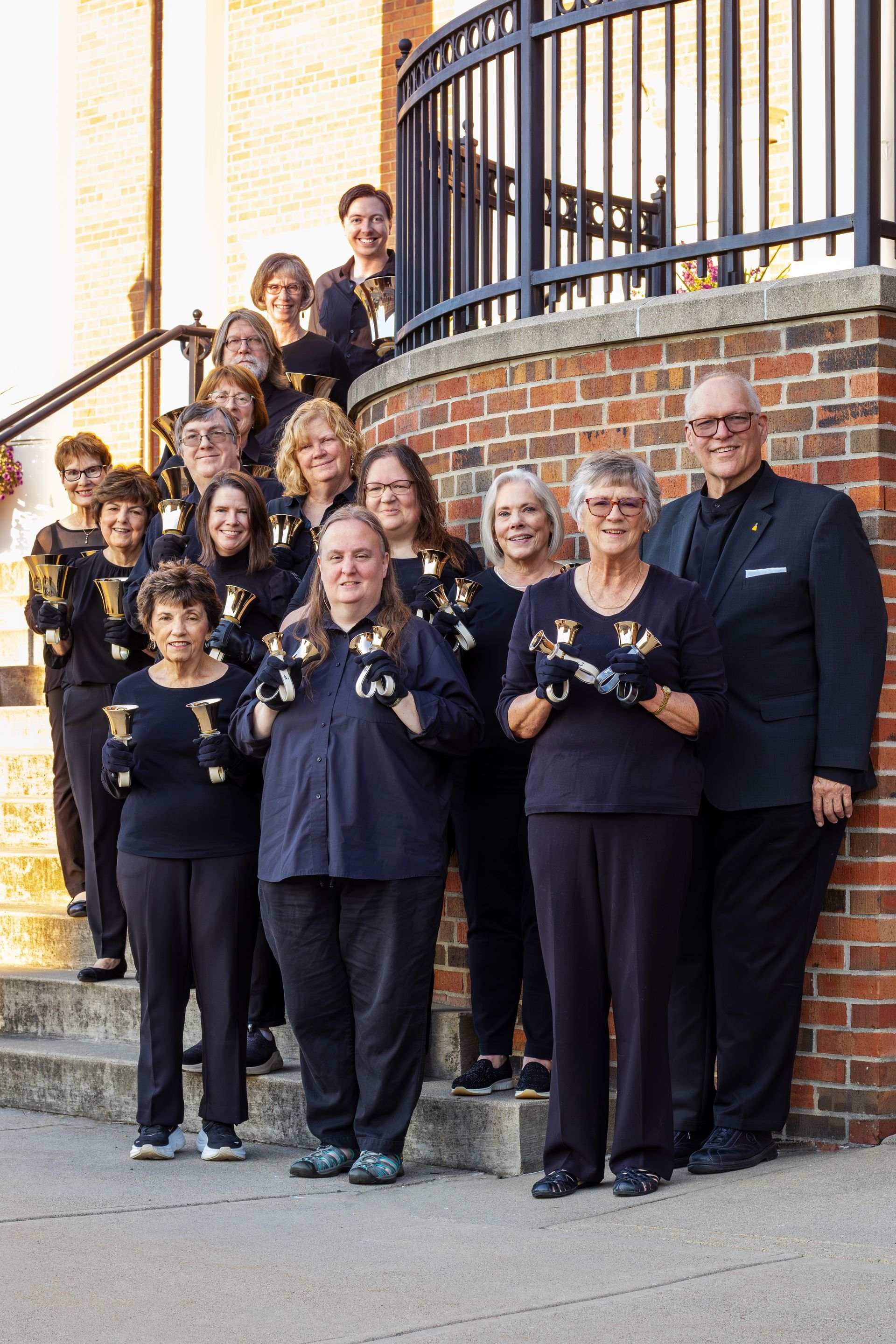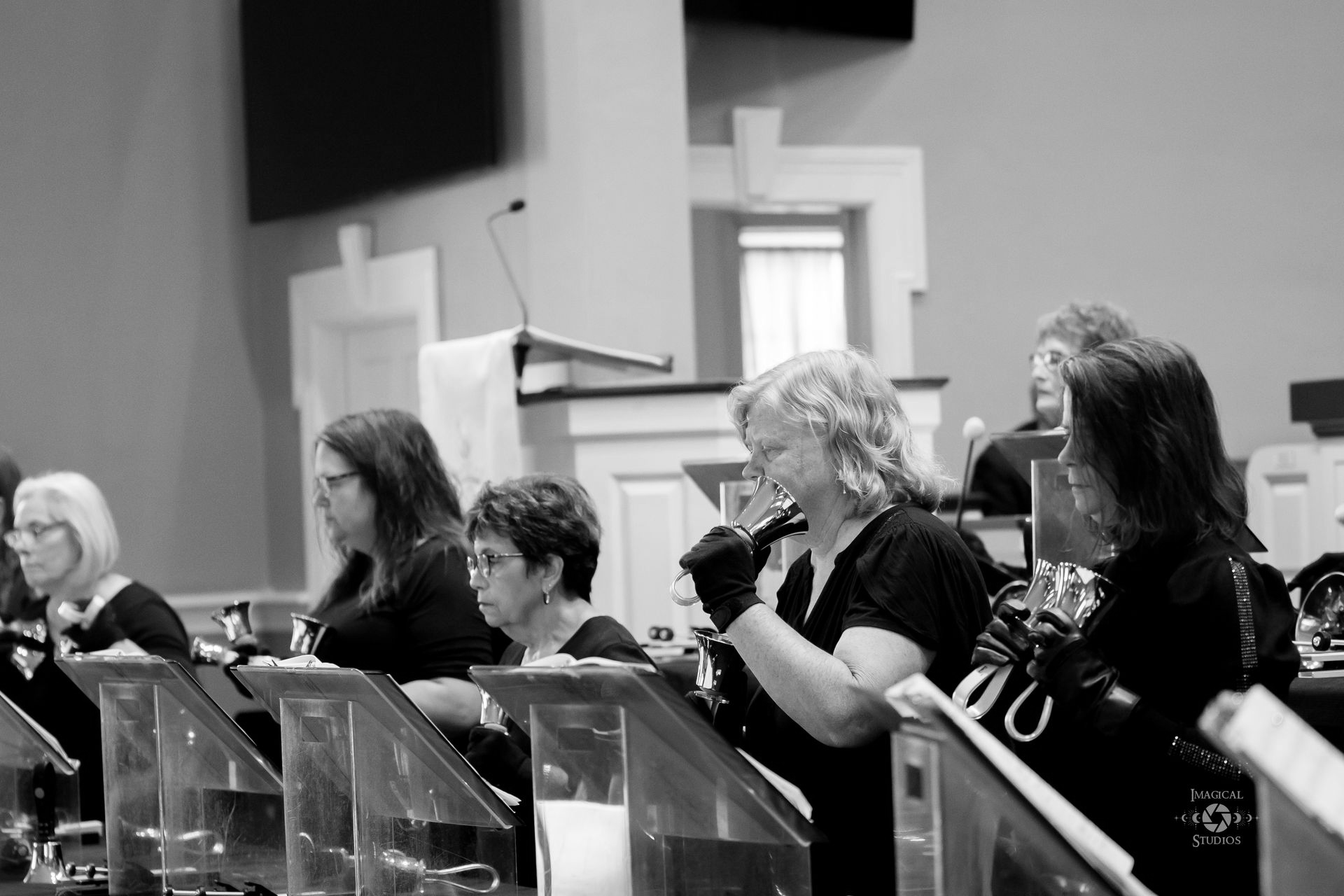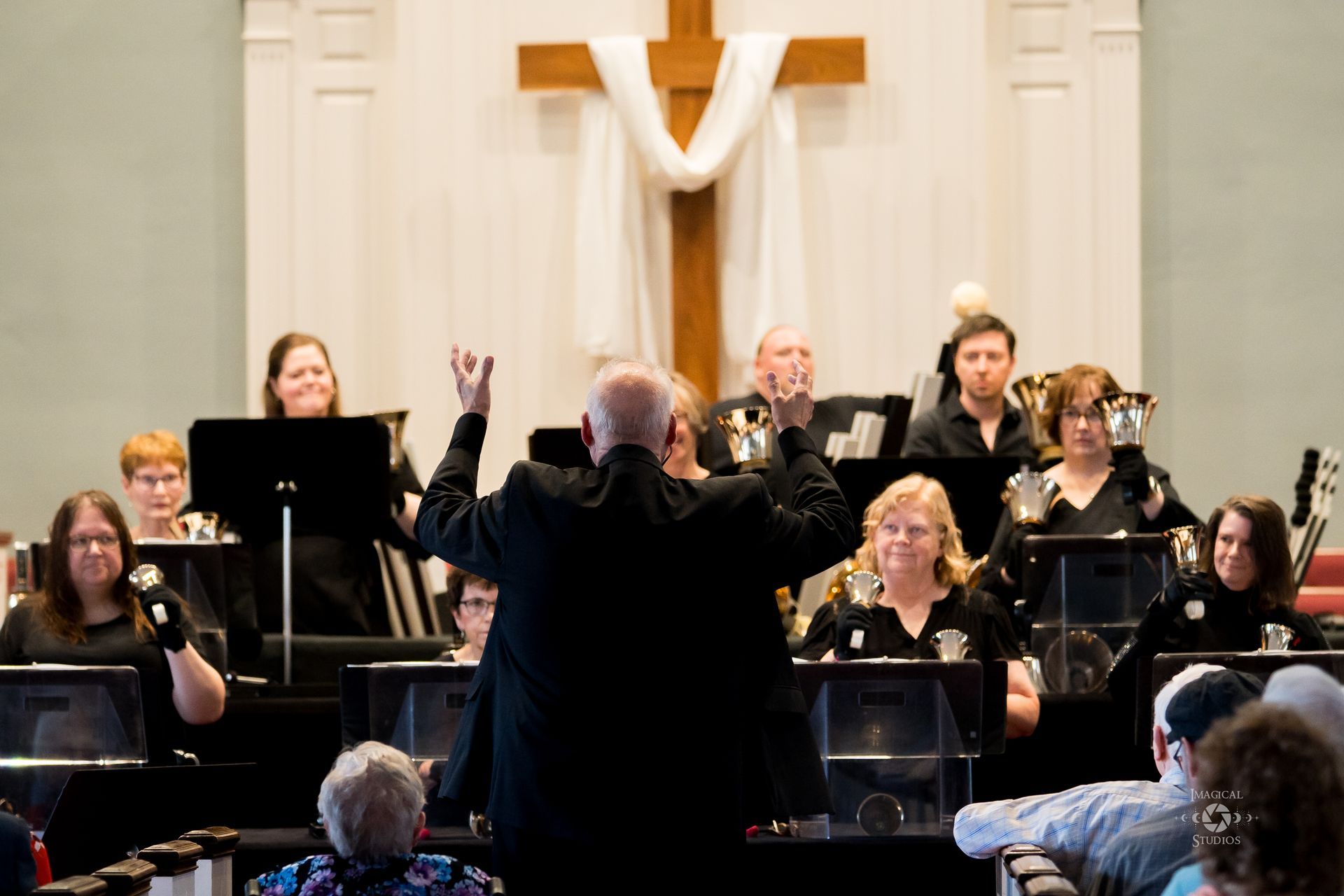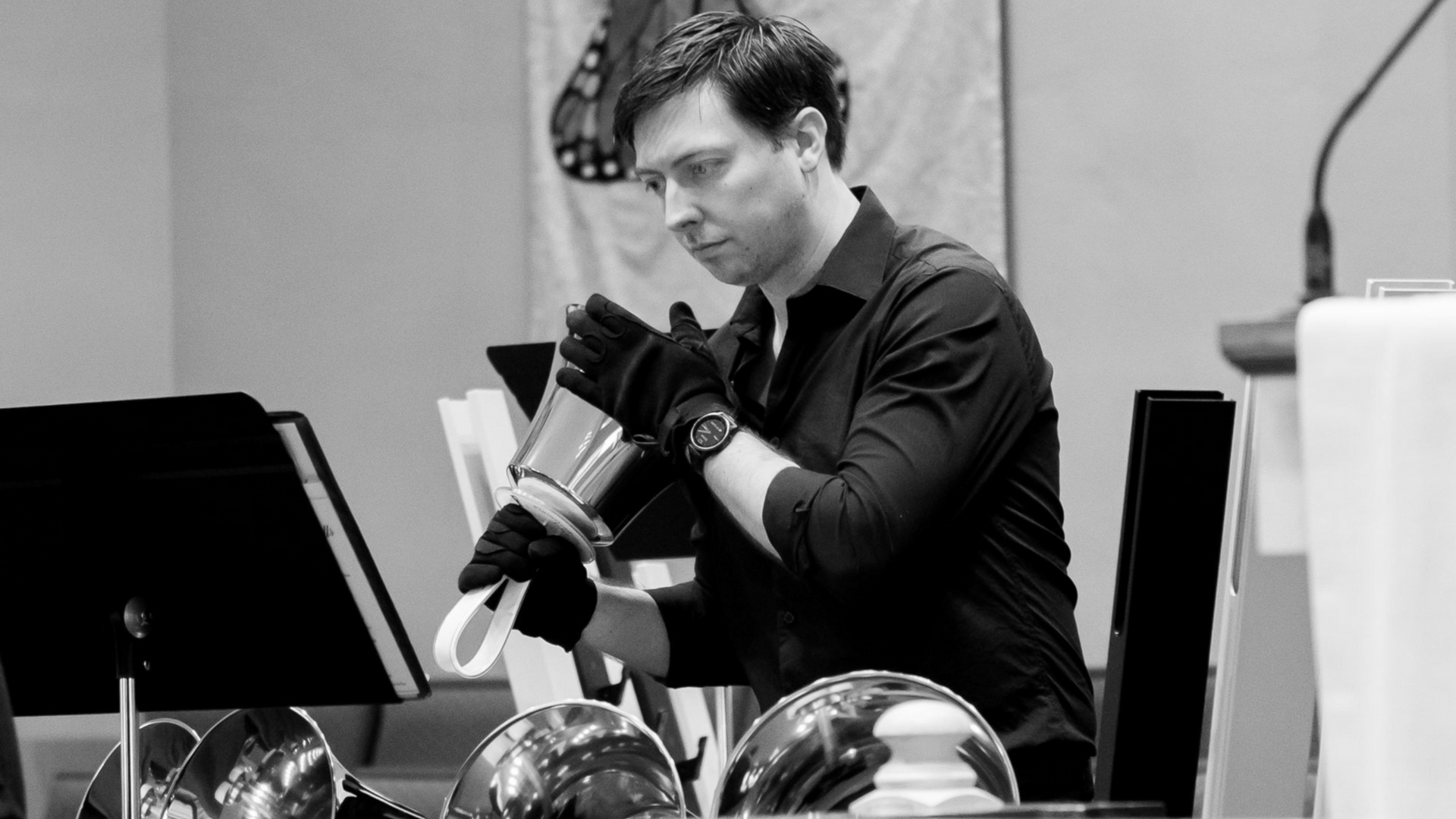Meet the
Lancaster Handbell Ensemble

2025 Ensemble
About Us
Founded in 2011, the Lancaster Handbell Ensemble made its debut performance at the 2011 Lancaster Festival Art Walk under the direction of Leta Cook. Currently under the artistic leadership of William Wittman, the Ensemble continues to grow in visibility and outreach within the Lancaster community and beyond.
The Ensemble rings 5 octaves of Malmark Handbells and Chimes, with a recent addition of a 7th lower octave, expanding its musical range.
Rehearsals are held at First Presbyterian Church in Lancaster, OH.
Our Mission
Our mission is to foster public appreciation for the art of English handbell ringing through both performance and education, reaching audiences in sacred and secular venues alike. We aim to deepen the understanding of this unique art form and its expressive potential.
Commitment to Excellence
Comprised of dedicated musicians, the Lancaster Handbell Ensemble is passionate about exploring the full artistic capabilities of the handbell medium. We are committed to performing compositions that showcase the distinctive sounds and textures of handbells while enhancing the listener's experience.
Community Engagement and Education
We actively support area school and church handbell groups, providing resources, guidance, and educational opportunities for local music directors and ensemble members. By sharing our knowledge and expertise, we aim to inspire the next generation of handbell musicians.
Ringing Assignments and bell handling techniques
Curious about how we know who rings what notes?
We normally have 13 positions numbered (from base to treble) 0 through 12 with positions 0 & 1 handling the 12 lower 3rd octave bass bells. We recently added position ".5" in the bass to better cover those bells. We also have occasionally added "double" ringers typically at positions 4, 5 & 6 to provide a richer sound. The four top treble ringers (Positions 9, 10, 11 & 12) each have two bells in each hand even though they are only reading two notes in the music. The bells get rather small at that end and as such, they "pair" two bells one octave apart. That is, they each have two "E" bells, two "F" bells, etc. in each hand. They are held in such a way that they ring together as one with the normal ring motion and is called "Shelly" ringing.
As you go further down the scale and the bells get a little larger, ringers still read one note per hand but usually only have one bell in each since they don't "double". But occasionally, they may have two bells in one or both hands and all are different notes. Often, it is an accidental (like a sharp or flat) that has to be rung right before or after a "normal" bell making it nearly impossible to quickly change. They will pick up the second bell in one hand at some point but it is arranged such that only one rings depending on their hand position. This is called "two-in-hand" ringing. When the normal "ring" motion is used, only the "ring bell" will ring. When the motion is like knocking on a door, only the "knock bell" will ring. This method can be used no lower than the bottom of the treble clef around Position 6 (D5-E5). From that point on, the bells are simply too large to have two bells in one hand.
All ringers will often use a method called "weaving". The bell in one hand is quickly placed on the table and the "extra" needed bell is picked up and rung when needed, often with the opposite hand that normally would ring that bell. It's a great technique that makes each ringer quite versatile.
And, when all else fails, a ringer will ring a bell for their neighbor simply because they have the free hand and can "catch that note" where it needs to ring.
Depending on how many ringers we have for an upcoming concert, we may add three additional "Position Doubler" ringers in the midsection or "battery" to add additional richness. That is, there are two ringers ringing the same position and are at Positions 3, 4 & 5. They use bells from our second 5-octave set of bells.
Keep in mind, there are over 20 different ways to actually "ring" a bell and each produces a very different and interesting sound. You will hear most of them during a concert.






